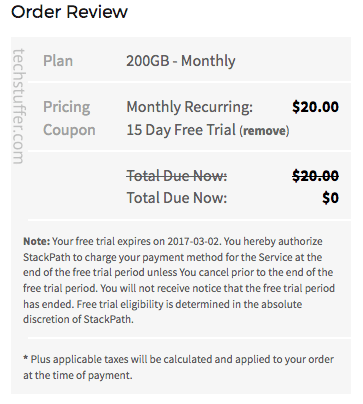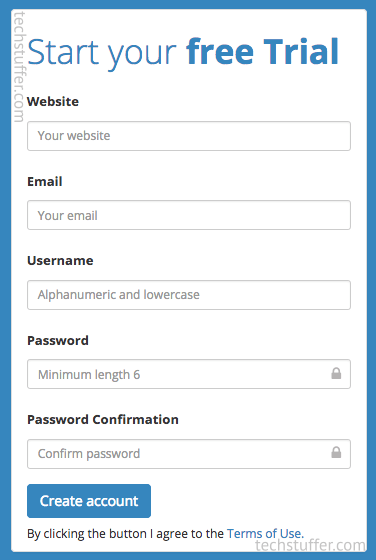Hello there! I have been busy with the launch of my new website and have been unable to bring new content on Tech Stuffer. Since I started planning my new site, I had listed its speed as one of my topmost priorities. I wanted to use all I could to make sure my site loaded quickly. This is when I got serious about investing some more money into new and better technologies.
I first started with switching my host to SiteGround. I have said it before and would love to say it again that this was the best decision I had taken in a while. I was now worried less about crappy hosting and I could pay more attention to other, much-needed things.
After switching to SiteGround and optimizing my old sites including this one, I kicked off my new WordPress site. While my new site’s overall performance was acceptable, it wasn’t meeting my expectations just yet.
This is when CDN came in the picture.
The Reson: Why CDN?
My SiteGround server is hosted in the USA, and my new site being about traveling, its target audience wasn’t going to be limited to just one region. I wanted my site to be loaded quickly just about everywhere it had visitors from.
In order to make my new site load quickly regardless of my visitors’ location, I had to start using a CDN service – something I had never felt necessary until now. I did some reading around the web, decided whether I really needed a CDN and whether I could invest money into a new project. I got my answer soon: Yes, I do need a CDN and I need to spare some money for it.
http://gph.is/1L8F8AV
Not every site ‘needs’ a CDN, though. If your site is hosted near your target audience’s location, you should probably not be worried more about it. An example would be a site hosted in the US for visitors targeting US and Canada. And if you are using a host who cares about your site’s performance as much as it cares about making money, you are in a good company.
But if your case is similar to mine, and your visitors are (or are going to be) spread across multiple regions, you should definitely consider using a CDN. Every major website today uses a CDN – the reason why they load very quickly almost everywhere.
The Question: Aren’t CDNs Costly?
That’s a good question and I asked myself the same. A short answer to this question is: yes, CDNs are costly. But it depends on what you call ‘costly.’ If you are serious about the performance of your website and are planning to be around for long, then you should have a budget. According to this budget, you can decide whether something is costly for you.
http://gph.is/29ZfMGR
Without having some money to invest into better infrastructure, you won’t be able to survive in the long run. I mean, there are bazillion websites out there. For most website owners (read: bloggers), their sites are a way of generating an income. In short, it’s no longer an activity you do in your spare time, it has become a well-known business.
And every business needs its due investment to begin and to survive. If you are very short on money to invest – yes, you will find CDNs costly. But if you look at it in the long run, every penny you invest for the betterment of your site is worth it and a CDN is not an exception.
The Search: Finding the Right CDN
After deciding I definitely needed a CDN service, I started my search for one. Every big player in the CDN scene is pricey, indeed. I call them ‘pricey’ because I couldn’t spare a large amount of money out of what I was earning.
http://gph.is/29HjlAO
When I started comparing the plans of CDN providers, I came to know that it was almost impossible to find a provider to power my sites – which have relatively low traffic – without paying an amount not suitable for me.
The best plan I could find was of MaxCDN (now StackPath). They give you 200GB bandwidth at $20 per month. That’s $240 a year. This is a good plan but not for me, at least – for three reasons.
First: It’s a waste of traffic as my sites aren’t consuming that much bandwidth. I would end up paying $20 for the bandwidth I never used.
Second: I wasn’t sure whether 15 days trial was sufficient for a new player like me. I had no idea if I would continue using their CDN if I didn’t get desired results. This brings me to the third reason.
Third: As I wasn’t sure about continuing the service, I wasn’t ready to provide a credit card for the trial. By providing a card (or PayPal) to them, I would end up being charged after the end of the trial – without any notice. And no, I didn’t want that to happen.

I know a large number of sites use MaxCDN and $240 a year isn’t that high. But to be very frank, for most bloggers like me, it IS a high price to pay.
All these reasons left me with one choice: KeyCDN.
The Answer: KeyCDN
KeyCDN has been in the market since around 2012 but let me admit that I had never heard of them before I started searching for a CDN provider. Before making them my providers, I visited their site, had a thorough look at their features and did a comparison, of course.
This Switzerland-based Europian company looked promising, indeed. It happened to solve my three concerns as I mentioned above. In short, it was something exactly what I was looking for.
First, KeyCDN’s price was the most suitable for me. Their plan is really simple and you can pay as you go. There’s no fixed monthly or yearly plan to commit to. They charge a flat fee of $0.4 per GB – regardless of your traffic’s region.
MaxCDN (StackPath) charges a flat fee of $20 per month for 200GB. If I ever happened to be using 200GB per month, I will still pay only $8 to KeyCDN instead of $20 to StackPath.
If I compare them both, I end up paying way too less if I went with KeyCDN. And I didn’t have to pay $20 a month for the unused bandwidth either.
One thing to note here is that you have to pay a minimum of $49 per year to KeyCDN. Even at that price, I get around 1230GB of bandwidth – which I can use throughout the year.
Second, KeyCDN provides you with 1 month of free trial. You can use all of their features and thoroughly test their service with your site. 1 month was sufficient for me.
Third, a credit card is not required to sign up for KeyCDN trial. You just enter your email and you’re good to go. Test your site’s performance for a month and if you don’t like it, you don’t pay anything at all. KeyCDN will stop your service at the end of your trial (without notice).
With KeyCDN solving three of my topmost concerns, I went ahead and signed up with them.
[mks_button size=”small” title=”KeyCDN Free Trial” style=”squared” url=”http://frunction.com/to/keycdn” target=”_blank” bg_color=”#38BC5B” txt_color=”#FFFFFF”]The Result: I Found Myself A Perfect CDN
To my surprise, my site’s performance was plain awesome – like Vanilla awesome. (Is there such a term, by the way?) In fact, it wasn’t really surprising, as it was exactly the result you would expect from a CDN.
My site was loading quickly for me, indeed. But that wasn’t sufficient, of course. I wasn’t going to be my site’s only visitor (hopefully :p) so the CDN had to prove its purpose.
I tested my site for about month with different online performance tests, and I found its performance highly promising. I tested with Pingom, GTMetrix, Webpage Test, Sucuri, Bytecheck, and KeyCDN’s in-house performance checking tools. All these tools presented me with positive results, boosting my confidence and trust in KeyCDN.
http://gph.is/1azp4Qi
Despite being an affordable CDN provider, KeyCDN’s performance is highly commendable. I found its results so satisfactory that I moved all my WordPress sites to KeyCDN.
For me, KeyCDN has been a perfect choice. I like the performance I am receiving for a price that’s most suitable for me. They have everything in place to support their users. They have detailed tutorials about everything related to using their service.
In addition, they have a friendly and prompt support – which is a must. Most low-cost providers (even some high-end organizations) in any field of service happen to have a crappy customer care and it’s good to see KeyCDN making an exception.
[mks_button size=”small” title=”KeyCDN Free Trial” style=”squared” url=”http://frunction.com/to/keycdn” target=”_blank” bg_color=”#38BC5B” txt_color=”#FFFFFF”]Summing Up
My new travel site is now up and running. It has been configured with KeyCDN, and SiteGround – giving me the desired results in terms of speed, security and stability – in my very budget.
Moving your site to a CDN alone will not speed up your site, though. You need to have a better host to begin with. In addition, you need to have a theme optimized for speed. Your database needs to be optimized, too. Getting rid of unnecessary plugins will help a lot.
One of the most important things your site need is speed. Remember, no one likes a slow website – not even me, not even you. Google also considers speed as one of the most important things for a site to rank better in their search results. If you haven’t invested in the betterment of your site(s), it’s about time that you start doing it.
As far as KeyCDN is concerned, I will pen-down a list of benefits of using KeyCDN, soon. I will also come up with tips to help you optimize your WordPress site for speed.
If you are looking for a robust yet affordable CDN provider, give KeyCDN a try. You will not be disappointed. Sign up by following this link and you will get $10 credit (250GB bandwidth) to begin with.
Want to learn how to configure KeyCDN with your WordPress sites? A step by step tutorial is here.
[mks_button size=”small” title=”KeyCDN Free Trial” style=”squared” url=”http://frunction.com/to/keycdn” target=”_blank” bg_color=”#38BC5B” txt_color=”#FFFFFF”]Support Me: If this article/tutorial helped you today, please consider supporting me and help me run frunction.com


